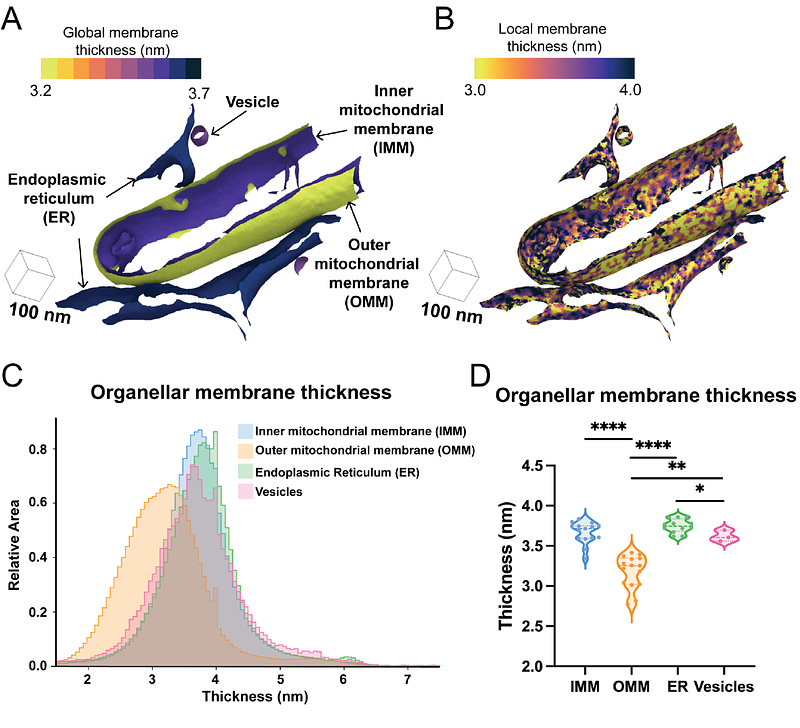Surface morphometrics reveals local membrane thickness variation in organellar subcompartments

Surface morphometrics reveals local membrane thickness variation in organellar subcompartments
Medina, M.; Chang, Y.-T.; Rahmani, H.; Fuentes, D.; Barad, B. A.; Grotjahn, D.
AbstractLipid bilayers form the basis of organellar architecture, structure, and compartmentalization in the cell. Decades of biophysical, biochemical, and imaging studies on purified or in vitro reconstituted liposomes have shown that variations in lipid composition influence the physical properties of membranes, such as thickness and curvature. However, similar studies characterizing these membrane properties within the native cellular context have remained technically challenging. Recent advancements in cellular cryo-electron tomography (cryo-ET) imaging enable high-resolution, three-dimensional views of native organellar membrane architecture preserved in near-native conditions. We previously developed a \"Surface Morphometrics\" pipeline that generates surface mesh reconstructions to model and quantify cellular membrane ultrastructure from cryo-ET data. Here, we expand this pipeline to measure the distance between the phospholipid head groups (PHG) of the membrane bilayer as a readout of membrane thickness. Using this approach, we demonstrate thickness variations both within and between distinct organellar membranes. We also demonstrate that membrane thickness positively correlates with other features, such as membrane curvedness. Further, we show that subcompartments of the mitochondrial inner membrane exhibit varying membrane thicknesses that are independent of network morphology (i.e., fragmented versus elongated networks). Finally, we demonstrate that large membrane-associated macromolecular complexes exhibit distinct density profiles that correlate with local variations in membrane thickness. Overall, our updated Surface Morphometrics pipeline provides a framework for investigating how changes in membrane composition in various cellular and disease contexts affect organelle ultrastructure and function.